Natural Resources of Bangladesh are naturally occurring substances obtained from the environment in Bangladesh.
Natural Resources of Bangladesh are the raw input used to manufacture products and harness energy all over Bangladesh.
Natural Resources or commodities themselves, which cover those already extracted from the Earth and those that are untapped or have yet to be extracted from Bangladesh. As a land bordering the Bay of Bengal, Bangladesh contains one of the largest gas and oil reserves in Asia-Pacific.
Quick Facts on Natural Resources of Bangladesh
- Bangladesh is the 7th-largest natural gas producer in Asia.
- Bangladesh produces around 2,700 million cubic feet of natural gas daily.
- The Sundarbans, along with its buffer zone is one of the richest areas for natural areas of Bangladesh.
- According to the 1998 forest inventory report, the Sundarbans hosts 12.26 million cubic meters of timber.
- Bangladesh is one of the world’s leading fisheries producer with an annual production exceeding 2.8 million tons.
Natural Resources in Bangladesh

Bangladesh is adorned with different types of Natural Resources, such as arable soil, minerals, forests and water. The different types of Natural Resources of Bangladesh are described below:
- Soil Resources -Bangladesh resides within the Ganges Delta. Bangladesh is mostly low-lying, riverine land. During the Monsoon season, the rivers overflow. And, they flood nutrient-rich alluvial soil in the flat lands. As a result, Bangladesh has one of the most fertile soils on Earth.
Heavy rainfall and long growing season boost the fertility of Bangladesh’s lands. Such lands proved beneficial for Bangladesh’s production of rice and jute. For this reason, Bangladesh is one of the largest producers of rice and jute.
Besides rice and jute, Bangladesh produces wheat, maize, sugarcane, cotton, linseed, repressed mustard, etc. in abundance.
- Natural Gas – natural gas is the most prominent source of energy for Bangladesh. Since 1970, Bangladesh has continuously produced natural gas in large quantities. Natural gas accounts for 75% of the commercial energy.
Although Bangladesh is the seventh-largest natural gas producer in Asia, Bangladesh lacks adequate quantities of gas for its growing population. At the current extraction and demand rate, Bangladesh’s natural gas will not last for 50 more years.
Many analysts suggest reducing the dependency on natural gas and introducing alternative/renewable energy source.
In 1993, Bangladesh had 17 gas fields. In 2014, the number of gas fields climbed to 26. However, Bangladesh lacks the technical expertise to conduct gas exploration on its own. For this reason, Bangladesh signed specific contracts (PSC) with foreign companies.
- Fisheries – fish is an important part of Bangladesh’s food culture. Bangladeshis are the biggest consumers of fish-based animal protein based on the highest per capita consumption.
Bangladesh is among the leading inland fisheries producers. Bangladesh produces more than 2.8 million tons of fish every year. Bangladesh possesses plenty of prawns, lobsters, turtles, molluscs and other fishery resources.
The fishery resources inhabit Bangladesh’s vast rivers and a number of inland waterbodies. Fish supplies about 60% of animal protein for Bangladesh. About 1.4 million people are employed by the fisheries sector. Fisheries play a vital role in nutrition, foreign exchange earning and enjoyment.
- Forest Resources – mainly the Sundarbans makes up Bangladesh’s forest resources. The Sundarbans accounts for 40% of Bangladesh’s forest land. Bangladesh’s one of the most diverse and profuse areas of natural resources is based on the Sundarbans Reserved Forest and its adjacent buffer zone.
The Sundarbans in Bangladesh makes up the largest mangrove forest in the world. The Sundarbans has an area of about 10,000 square kilometers. Of which 6,000 square kilometers are spread over Bangladesh. And, the rest are part of India.
The Sundarbans provides a wide range of substantial subsistence, such as fresh water, food and timber. It’s reported that there are 12.26 million cubic meters of timber available in the Sundarbans. The valuable species of trees that are found in the Sundarbans include Sundari, Keora, Baen, Passur, etc.
The Sundari, spread over 73% of the reserve, is the most important species of trees. However, due to rising levels of salinity, vegetation in the Sundarbans is on the decline.
The volume of Sundari tress started declining over the last few years. The Sundarbans is also an abundant source of non-wood products! You can find honey, wax, Golpata, crab and other high-value products.
Bottom Line – Bangladesh has a considerable quantity of natural resources. But, like all other natural resources, they will all exhaust one day or there won’t be anything left to consume. Therefore, Bangladesh needs to invest sizeable budgets in finding alternative or renewable energy sources. The country also needs to strengthen the conservation of endangered species, fisheries and forestry.
